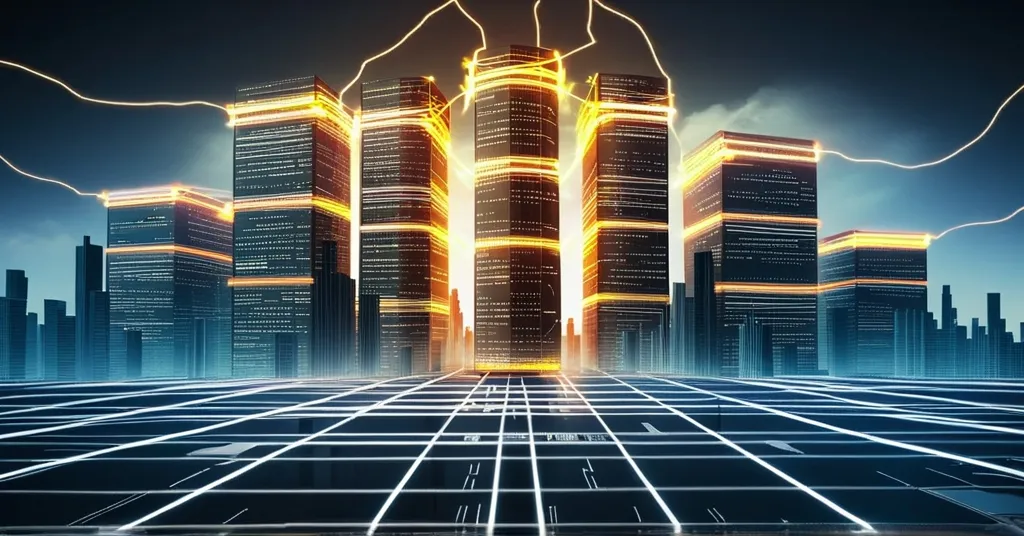AI Data Centers Threaten Global Energy Stability, Warns Schneider Electric Study

Data Centers Will Eat the Grid, Warns Schneider Electric in a Study
Schneider Electric’s recent study warns that the rising energy demands of AI data centers could strain global electricity grids, potentially leading to widespread power shortages.
- AI data centers threaten global energy stability.
- Four scenarios for AI energy consumption: Sustainable AI, Limits to Growth, Abundance Without Boundaries, Energy Crisis.
- Schneider Electric’s recommendations for sustainable management.
Schneider Electric, a giant in energy management and automation, has sounded the alarm on the voracious energy appetite of AI data centers. Their comprehensive study suggests that without strategic intervention, these centers could devour the stability of our global electricity grids, leading to potential energy crises. Picture this: AI data centers, those humming hubs of computation, turning into energy-hungry beasts that could leave us all in the dark if not managed wisely.
The study lays out four stark scenarios for the future of AI energy consumption. The Sustainable AI scenario imagines a world where AI growth is meticulously managed to minimize its environmental footprint. Here, AI-related electricity consumption is projected to surge from 100 terawatt-hours (TWh) in 2025 to a whopping 785 TWh by 2035. To put this in perspective, a terawatt-hour is enough energy to power millions of homes for a year. The Limits to Growth scenario considers the human-related constraints that could slow AI’s expansion. Abundance Without Boundaries examines the risks of unchecked growth, while the Energy Crisis scenario warns of potential energy shortages due to the mismatch between AI’s demand and our ability to generate power.
But it’s not all doom and gloom. Schneider Electric isn’t just ringing the alarm; they’re also pointing the way forward. Their recommendations for managing this impending energy challenge include optimizing AI infrastructure with energy-efficient hardware and cooling technologies. Imagine data centers that sip energy rather than guzzle it. They also advocate for developing more efficient AI models through techniques like model pruning, essentially trimming the fat from AI algorithms to make them leaner and meaner. And let’s not forget governance and standards for sustainable AI practices, ensuring that as AI grows, it does so responsibly.
This study comes hot on the heels of the IEA Global Conference on Energy and AI, which highlighted the critical link between artificial intelligence and our energy systems. Rémi Paccou, Director of Schneider Electric Sustainability Research Institute, co-authored the report with Prof. Fons Wijnhoven from the University of Twente, Netherlands. Their work emphasizes the need for continuous learning and adaptation in this rapidly evolving field.
Instead, we hope it serves as a starting point for informed discussion and decision-making.
We present our findings with the understanding that AI is a rapidly evolving field and that our knowledge is constantly growing.
AI’s impact on energy extends beyond data centers. It’s also being harnessed to accelerate energy material discovery and enhance energy efficiency in various applications. Take, for instance, AI-powered HVAC systems in educational buildings, which have shown a 65tCO2e/y reduction in carbon emissions. That’s a practical example of how AI can help us build a more sustainable future.
On the global stage, efforts are underway to address AI’s energy implications. The IEA plans to publish a special report on energy and AI in spring 2025, and countries like Canada, France, and Korea are gearing up to collaborate with the IEA on these issues. This underscores the global nature of the challenge and the need for collaborative solutions.
As we stand at the crossroads of technological advancement and energy sustainability, the choices we make now will shape our future. Will we allow AI to run rampant, consuming energy without a care, or will we guide its growth with a steady hand towards a more sustainable future? It’s a question we can’t afford to ignore, especially in the world of crypto, where innovation and sustainability must dance in harmony.
Key Questions and Takeaways
What are the potential impacts of AI data centers on electricity grids?
AI data centers could strain electricity grids, leading to potential energy crises and widespread power shortages if growth is not managed sustainably.
What scenarios does Schneider Electric propose for future AI energy consumption?
Schneider Electric outlines four scenarios: Sustainable AI focuses on efficiency and conservation; Limits to Growth considers human constraints; Abundance Without Boundaries looks at risks of unchecked growth; and Energy Crisis explores potential energy shortages due to uneven demand and generation.
What recommendations does Schneider Electric offer to manage AI’s energy consumption sustainably?
Recommendations include optimizing AI infrastructure with energy-efficient hardware and cooling technologies, developing efficient AI models through techniques like model pruning, and implementing governance and standards for sustainable AI practices.
How are global efforts addressing AI’s energy implications?
Global efforts include the upcoming IEA report on energy and AI, and collaborations among countries like Canada, France, and Korea to develop sustainable solutions.
What can individuals do to support sustainable AI growth?
Individuals can advocate for energy-efficient technologies, engage in discussions on AI and energy policy, and support companies committed to sustainable practices.



